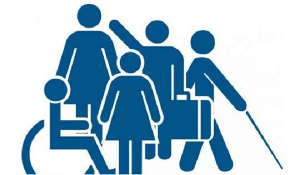Opinions of Friday, 2 December 2022
Columnist: Carruthers Tetteh
Educating persons living with disabilities in Ghana: Predicaments and solutions
State of Concerns
Common concerns in the inclusion movement and practice of Persons with Disabilities (PWDs) have gained popularity around the world. Various supporting models in terms of accessibility and inclusion designs have been formulated and implemented to make the lives of PWDs more appropriate.
At the international level, the United Nations Convention on the Rights of Persons with Disabilities (Article 24) strengthens the principles of non-discrimination and promotes equal opportunities for education at all levels. Thus, countries should make constructive efforts to accommodate students with disabilities at all levels of education towards equal opportunities in their studies and training.
In Ghana, the questions one seeks to find answers to are, how has inclusive education in the country progressed toward providing the best education to students with disabilities?
Unfortunately, out of over 700 Senior High schools in Ghana, less than eight [8] of such schools are integrated with persons living with disabilities. There is no single integrated school in the whole of Western, Ashanti, Northern, and Greater Accra regions.
What this means is that, in a situation where a student with visual impairment who resides in the Western Region qualifies to pursue education at the senior high level, the options available are the nearest National Colleges located within the Central or the Eastern Regions. This creates limited options for such a student to have access to education.
The commitment to inclusive education for all should lead both the private and public sectors to allocate additional technical, financial, and human resources which are aimed at empowering schools and higher educational institutions to be more accessible.
Despite the existence of a legal framework on equality of opportunities and non-discrimination, implementing “education for all” should go beyond just enacting laws and formulating policies. There has to be a drastic educational system that provides them with the required skills to progress beyond compulsory education and become employable.
Unfortunately, the reality is that most mainstream facilitators are not adequately prepared to adapt their teaching practices to students with special needs. Vocational training courses that enable us to meet the labour market requirements are also inadequate.
The Way Forward
All forms of discrimination must be prohibited and educational institutions are to draw up a specific annual action plan for the equality of students with special needs. The government wing in charge of PWDs should ensure effective transitional policies and pathways from education to employment and one educational level to another.
There should be strong and reliable indicators and statistical data in supporting effective planning and monitoring of education and training policies. At both local and international levels, persons living with disabilities, their parents, and representative groups at all levels of educational policy should be actively involved.
Research suggests that equal access to well-established inclusive education in the mainstream promotes the employment and work prospects for PWDs and inclusive access to education increases individuals’ ability to be included in society.
PWDs accessing mainstream education have better community participation and closer personal relationships than those who do not enjoy such access. The need to develop an inclusive education system is not only a matter of rights. Access to education offers a key means to put PWDs on an equal footing with everyone else.
The UNESCO Salamanca Statement arising from the 1994 World Conference on Special Needs Education) affirmed international agreement on the principle PWDs should be taught in the same mainstream schools as their non-disabled peers.
The theme for this year’s 2022 International Day for Persons with Disabilities which is “Transformative solutions for inclusive development: The role of innovation in fuelling an accessible and equitable world” calls for a cross-sectoral perspective allowing various dimensions to be taken into account and combining the inclusive design for all approach with specific assistive solutions across policy areas and for that matter, laws alone are insufficient to produce an effective commitment to accessibility, and inclusive education for all.
Entertainment










